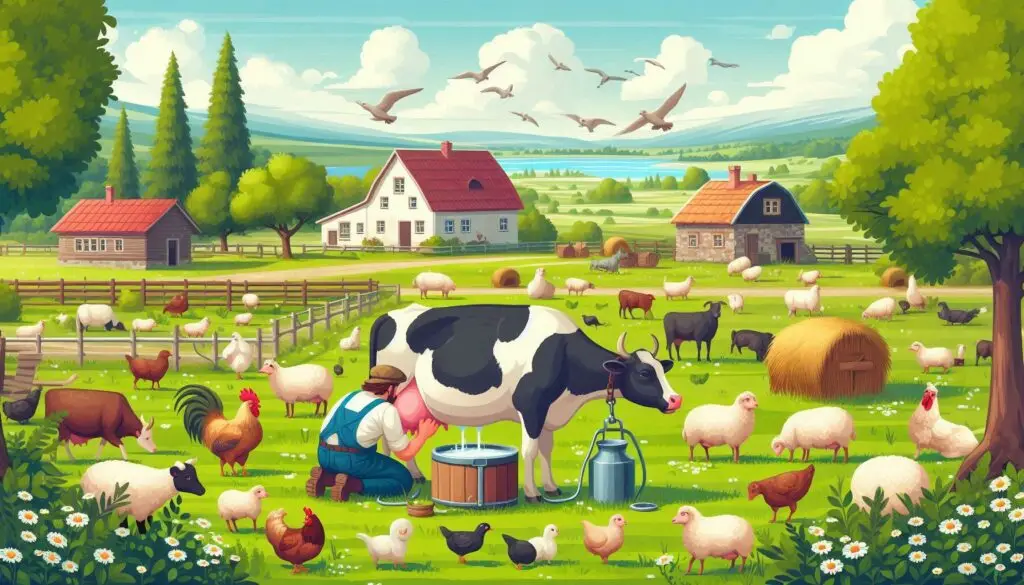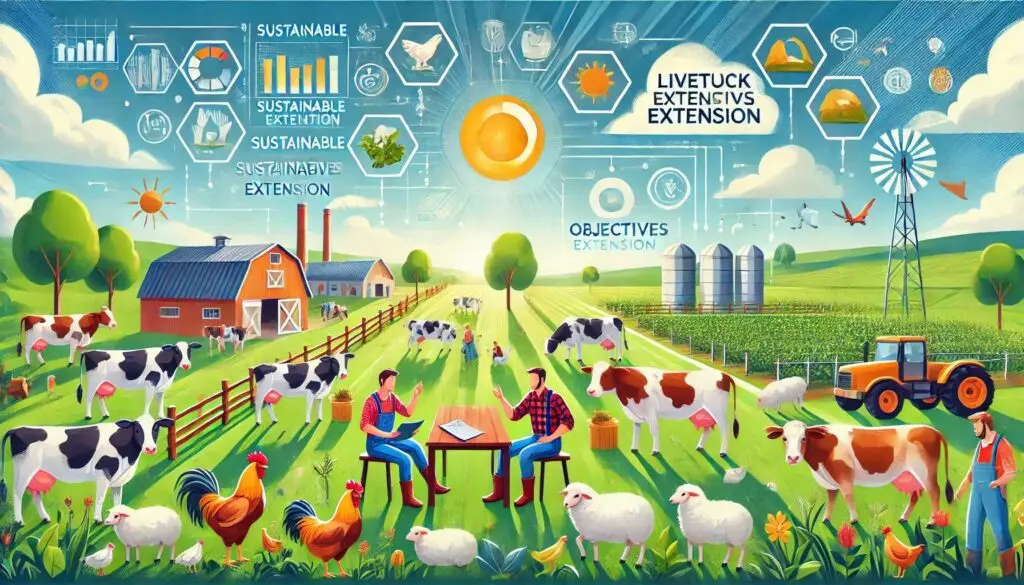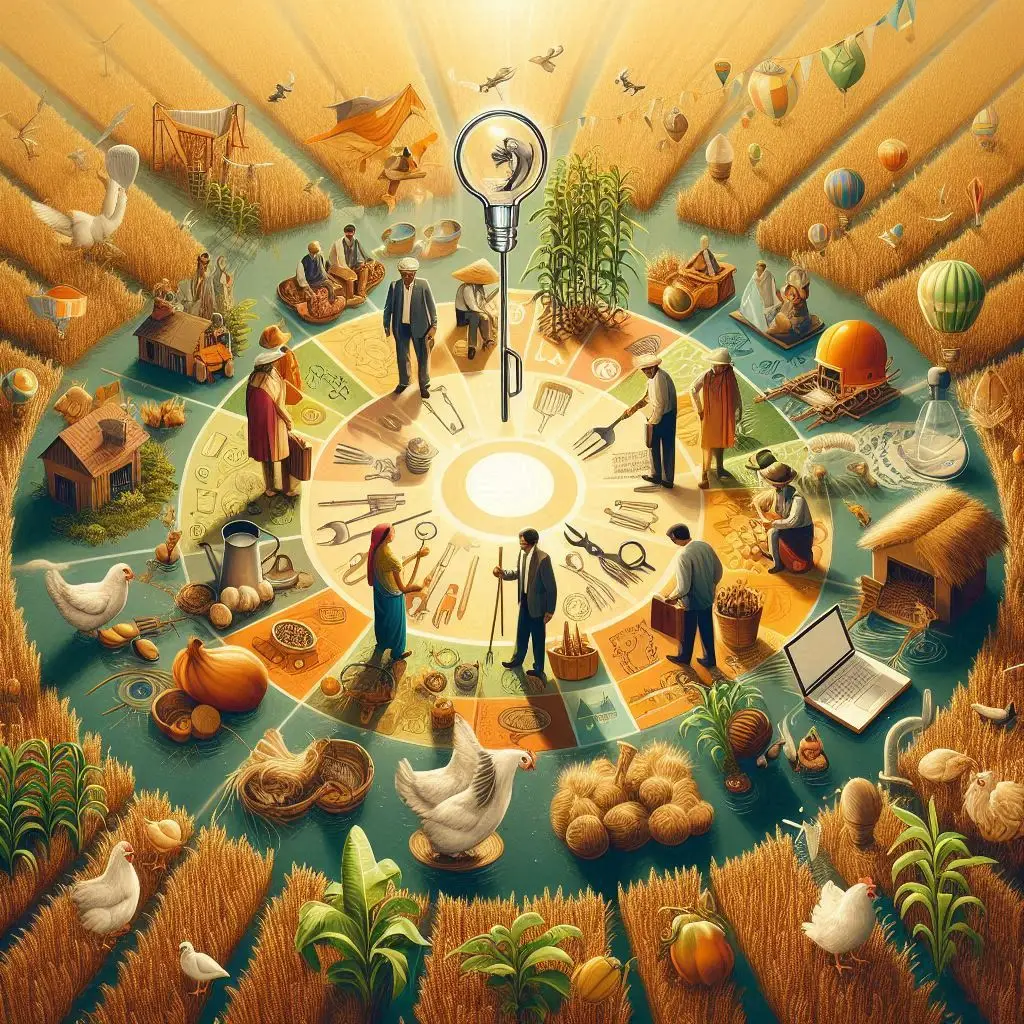Comparison of Dairy Farming in India and Advanced Countries

Dairy farming plays a vital role in the agricultural landscape of many countries. In India, it is a significant part of rural life and contributes to the economy. In contrast, advanced countries like the USA and those in Europe have established highly efficient dairy systems. This article compares dairy farming in India with that in advanced countries, focusing on productivity, farm structure, technology, and economic impact.
Introduction to Dairy Farming
Dairy farming involves raising cattle for milk production. It is an essential source of nutrition and income for millions worldwide. The Food and Agriculture Organization (FAO) reports that global milk production has increased significantly over the past few decades. However, the methods and efficiency of dairy farming vary widely across different regions.
The Importance of Dairy Farming
In India, dairy farming is not just an economic activity; it is a way of life for many families. The sector supports over 80 million farmers and contributes about 5% to the national GDP. In advanced countries, dairy farming is also crucial but often operates on a larger scale with more mechanization.
Milk Production and Productivity
Current Statistics
India is currently the largest milk producer globally, with a production of approximately 230 million tonnes as of 2022-23. This accounts for about 22% of global milk production. In contrast, the USA ranks second, producing around 100 million tonnes annually.
Average Milk Yield
In India, the average yield per cow is relatively low. For exotic breeds, it stands at about 9.15 kg/day, while indigenous breeds yield even less. According to National Dairy Development Board (NDDB), increasing productivity through better breeding practices is essential for future growth.
In advanced countries like the USA and Germany, average yields can exceed 30 kg/day per cow due to superior genetics and feeding practices. This difference highlights a significant gap in productivity that affects overall output.
Factors Influencing Productivity
Several factors influence milk productivity:
- Breeding Practices: Advanced countries use artificial insemination and genetic selection extensively.
- Feeding: Nutritional management is more sophisticated in developed nations.
- Health Management: Regular veterinary care ensures higher health standards for cows.
Farm Structure
Types of Dairy Farms
India’s Small-Scale Farms
In India, over 80% of dairy farms are small-scale operations run by families. These farms typically have 1-2 cows and rely on traditional methods for milking and feeding. The cooperative model has gained popularity, helping farmers access markets and improve their income. The success of cooperatives like AMUL has transformed many rural economies.
Large-Scale Operations in Advanced Countries
In contrast, advanced countries often feature large-scale dairy farms that can house hundreds or even thousands of cows. These farms benefit from economies of scale and can invest in technology that enhances productivity. For example, Denmark has a robust cooperative system that supports large dairies and ensures high-quality milk production.
Farm Management Practices
Farm management practices vary significantly between India and advanced countries:
- India: Farmers often lack access to modern management tools. Record-keeping may be minimal.
- Advanced Countries: Farmers use software for herd management, tracking health metrics, and optimizing feed efficiency.
Technology Adoption
Current Technologies in Dairy Farming
Technology plays a crucial role in enhancing productivity and efficiency in dairy farming.
India’s Technological Landscape
While some Indian farmers have adopted modern practices like artificial insemination, many still rely on traditional methods. The government promotes initiatives to improve technology adoption through training programs.
For instance, the National Dairy Plan aims to enhance productivity by promoting better breeding techniques and improving animal health.
Advanced Technologies in Developed Countries
In advanced countries, technology is integrated into every aspect of dairy farming:
- Automated Milking Systems: These systems allow cows to be milked without human intervention.
- Precision Feeding: Farmers use data analytics to provide tailored nutrition to their herds.
- Health Monitoring Systems: Wearable technology tracks cow health metrics continuously.
These technologies lead to higher efficiency and better animal welfare standards.
Impact of Technology on Productivity
The integration of technology significantly impacts productivity levels:
- In India, limited access to technology constrains growth.
- In advanced countries, technological advancements drive continuous improvements in yield and quality.
Economic Impact
Contribution to National Economies
Dairy farming contributes significantly to both India’s economy and those of advanced countries.
Economic Role in India
Dairy farming supports millions of livelihoods in India. It provides employment opportunities not just on farms but also in processing and distribution sectors. The sector has shown robust growth rates of about 6% annually.
According to the Indian Ministry of Animal Husbandry, dairy farming plays a crucial role in poverty alleviation by providing stable incomes to rural families.
Economic Significance in Advanced Countries
In developed nations, dairy farming also plays an important role but often benefits from government subsidies that support farmers during downturns. For example, the European Union provides financial assistance to ensure stable prices for dairy products.
Market Dynamics
The market dynamics differ between India and advanced countries:
- India: The market is fragmented with many small producers selling directly or through cooperatives.
- Advanced Countries: Larger producers dominate the market, allowing them to negotiate better prices with retailers.
Challenges Facing Dairy Farming
Challenges in India
Despite its growth potential, Indian dairy farming faces several challenges:
- Low Productivity: As mentioned earlier, low milk yields hinder overall production.
- Infrastructure Issues: Poor infrastructure for storage and cooling affects milk quality.
- Market Access: Small farmers often struggle to access larger markets due to lack of resources.
Challenges in Advanced Countries
Advanced countries also face challenges:
- Environmental Regulations: Stricter regulations aim to reduce carbon footprints but can increase operational costs.
- Market Volatility: Fluctuations in global milk prices can impact profitability.
- Animal Welfare Concerns: There is increasing scrutiny regarding animal welfare practices on large farms.
Future Trends in Dairy Farming
Sustainable Practices
Both India and advanced countries are moving towards sustainable dairy farming practices:
- In India, initiatives focus on improving animal health while reducing environmental impacts.
- Advanced countries are investing heavily in sustainable technologies that minimize waste and energy consumption.
Innovation in Breeding Techniques
Innovations such as genomic selection are becoming more common:
- In India, efforts are underway to improve indigenous breeds through scientific breeding programs.
- In developed nations, genomic selection allows farmers to make informed breeding decisions quickly.
Consumer Preferences Shaping Markets
Changing consumer preferences also influence dairy markets:
- In India, there is a growing demand for organic products.
- In advanced countries, consumers increasingly prefer plant-based alternatives alongside traditional dairy products.
Conclusion
In summary, dairy farming presents unique challenges and opportunities across different regions. While India leads globally in milk production volume, its productivity lags behind that of advanced countries due to various factors including farm structure and technology adoption. As both regions continue to evolve, sustainable practices will play an integral role in shaping the future of dairy farming worldwide.
By understanding these differences, stakeholders can work towards improving practices that benefit farmers while meeting consumer demands effectively.
More from Livestock Production and Management:
https://wiseias.com/livestock-production-trends/
https://wiseias.com/livestock-feeding-trends/






Responses